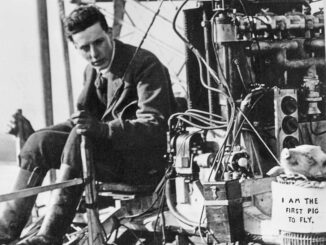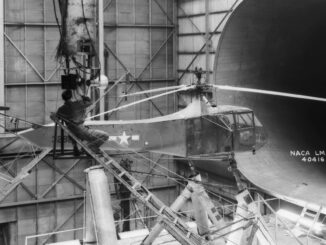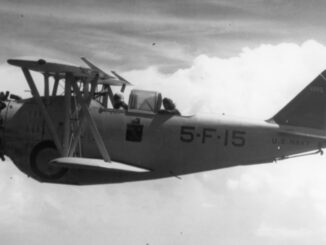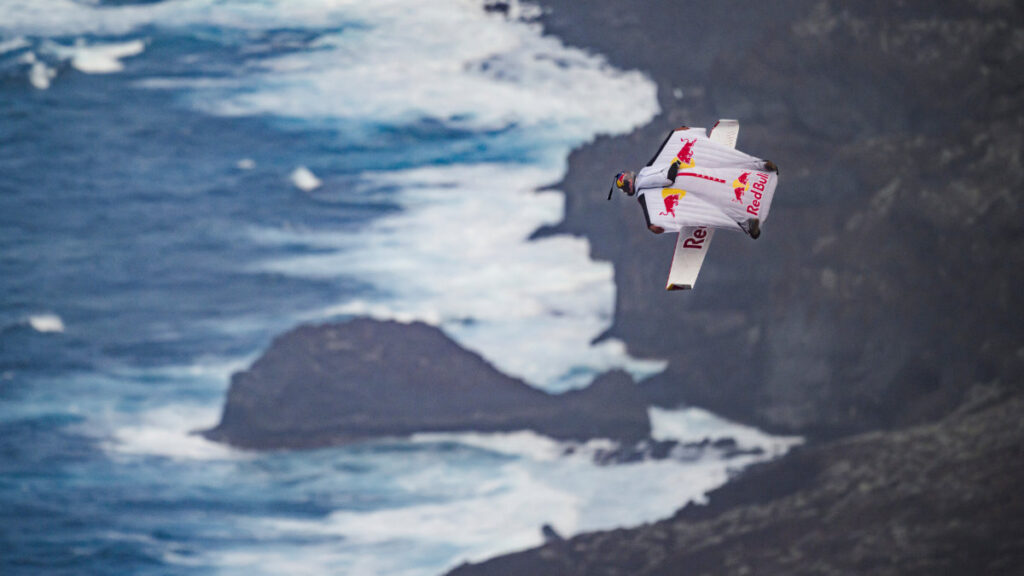
In its press release published on 19 November 2025, the Red Bull company announced that Austrian wingsuit pioneer Peter Salzmann had once again pushed the boundaries of what is possible in human flight. This time, thanks to a specially designed foil wing, he achieved continuous flight in moderate winds while gaining altitude.
Salzmann, soaring above the volcanic cliffs of El Hierro in the Canary Islands, Spain, used rising air currents along a mountain ridge to complete a 160-second flight, during which he managed to gain 67 metres of altitude in his best ascent. During the flight, he performed numerous 180-degree turns, losing less than 200 metres of altitude in total. This feat is all the more impressive when one considers that during a standard wingsuit flight, ten times more altitude is usually lost in the same amount of time.
Traditional wingsuit flying is characterised by a slow but continuous descent. Until now, gliding like a bird in a wingsuit had only been possible in winds of around 120 kph. However, over El Hierro, Salzmann flew in much weaker winds, at speeds of only about 40 kph. The wind was so gentle that paragliders were able to accompany the Austrian wingsuit pilot during the flight.
This was made possible thanks to the combination of the special design of Salzmann’s wing and his ability to utilise the wind to control his wingsuit flight. As a result, the mental and physical challenges of flying with a wingsuit became more akin to the experience of bird flight.
Standard wingsuits are unable to generate enough lift to remain airborne without constantly losing altitude. This is why Salzmann required an additional, specially designed wing that would enable him to control his flight, stay close to the ridge and execute the tight turns necessary to glide along it.
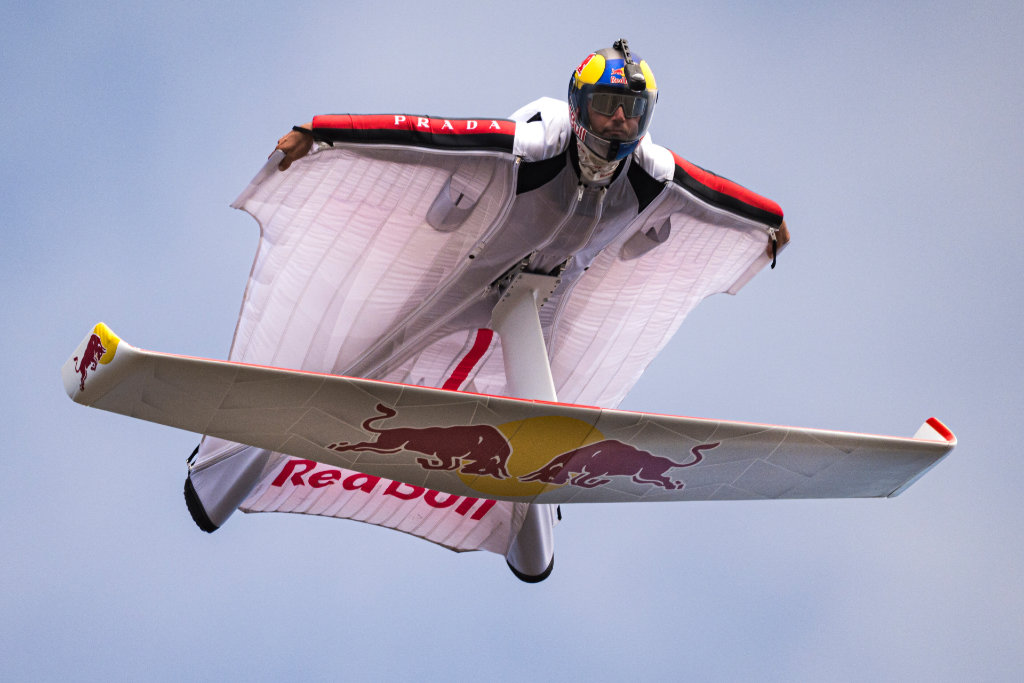
This wing was developed in collaboration with Red Bull Advanced Technologies and Austrian wingsuit expert Andreas Podlipnik. Inspiration for the design came from wings used in aviation and hydrofoiling. The idea was to reduce descent speed and increase flight stability by creating a wing that, when combined with the wingsuit, would maximise lift and efficiency.
To achieve this, the aerodynamics team from Red Bull Advanced Technologies created a model of real flight conditions. They used the same computational fluid dynamics (CFD) analysis and calculation tools that are involved in designing the Red Bull Racing Formula 1 car. Using CAD software, the team developed various wing and winglet profiles, which were then subjected to CFD simulations to measure their lift and aerodynamic drag. These simulations helped the aerodynamics specialists refine the design until it met the requirements set out by Salzmann.
“Flying the foil in the conditions at El Hierro was the most challenging flight Peter has ever experienced. Staying close to the terrain to remain in the high-lift and compression zone required extreme precision, with very little margin for error. Combined with the added complexity of controlling both the wingsuit and the foil, the flight was truly a masterpiece of skill and innovation” – said Andreas Podlipnik.
During the flight, Salzmann wore functional accessories prioritising comfort and high performance, designed in partnership with Prada Linea Rossa. These accessories were developed as part of an ongoing collaboration to support athletes undertaking demanding challenges.
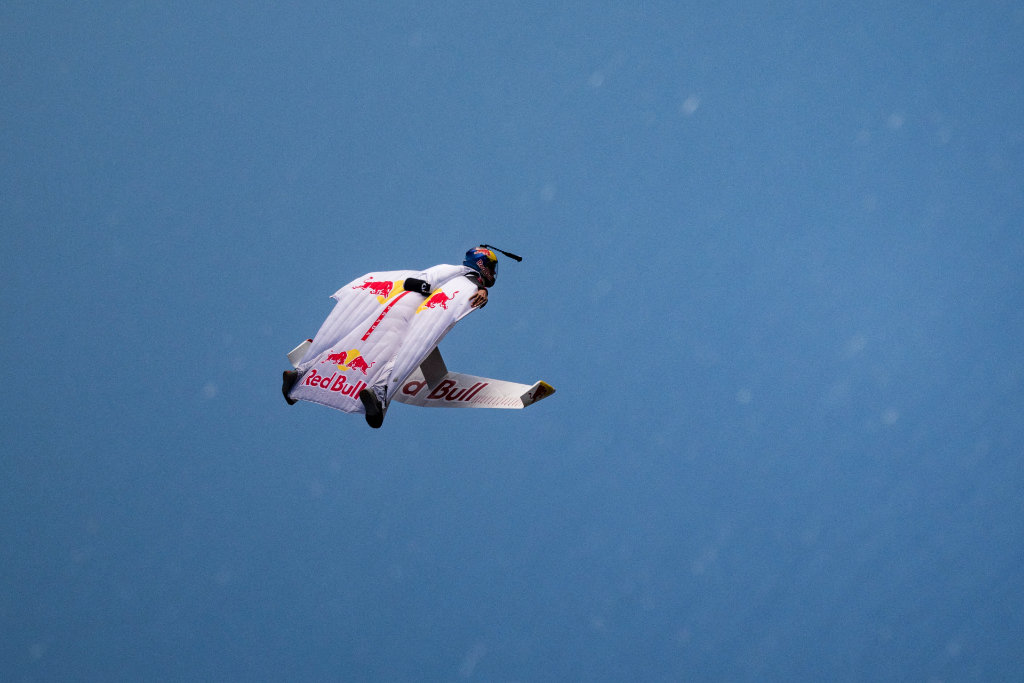
El Hierro was not chosen as the venue for this flight by chance. With its strong, steady winds, a mountain overlooking the ocean and a ridge parallel to the wind, the island provided the perfect location. Thanks to the foil wing, Salzmann was able to fly along the mountain ridge, transitioning from a controlled descent to gliding with the wind instead of the standard continuous descent.
During his best flight, the wingsuit flyer completed six passes along a 740-metre stretch, sometimes climbing, sometimes maintaining altitude and sometimes descending.
“I had to fly the foil close to the stall point, as it creates the most lift at that high angle of attack. As the lift and ridge are not constant, I had to fly very sensitively and continually correct directions and angles” – said the wingsuit pilot.
During his best climb, Peter Salzmann ascended 67 metres while travelling 450 metres horizontally. His longest continuous climb lasted 20 seconds. After performing several 180-degree turns, he succeeded in returning to the same reference points at the same or even at a higher altitude.
“I was able to pass a point, soar along the mountain, turn around and, after 40 seconds of flight, pass the same spot but higher,” – Salzmann said. “I gained 67 metres of altitude along the ridgeline, which is crazy — that’s the height of a 22-storey building!”
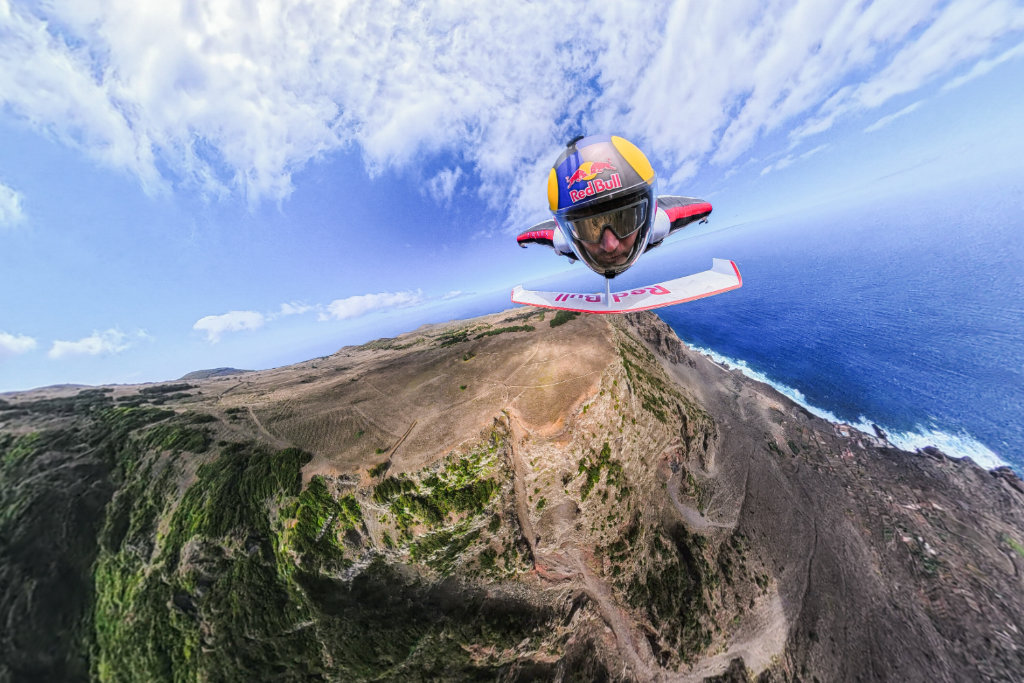
This demonstrates the consistency of his flight path. According to Salzmann, he lost too much altitude during the turns, identifying this as the area requiring the greatest improvement. However, his flight results clearly show that if a pilot can repeatedly return to updraught zones, this pattern could, in theory, be continued indefinitely.
Salzmann’s latest achievement marks another breakthrough in wingsuit flying. Through this endeavour, the Austrian athlete has demonstrated how wind, terrain and technology can be utilised for sustained flight, bringing the discipline closer to the principles of bird flight. By ascending to a certain altitude with the help of wind blowing at approximately 40 kph, using a wingsuit equipped with an additional foil wing, Salzmann proved that sustained flight in moderate conditions — previously thought to be possible only in very strong winds — is also achievable at much lower wind speeds.
More information about Peter Salzmann and his other wingsuit flying milestones can be found in our previous articles:
– Austrian wingsuit pilot pushed boundaries of human flight by breaking three new world records;
– Austrian wingsuit pilot sets the new world speed record.
Cover photo: Sebastian Marko / © Red Bull Content Pool. Information from the Red Bull company press release were used.

